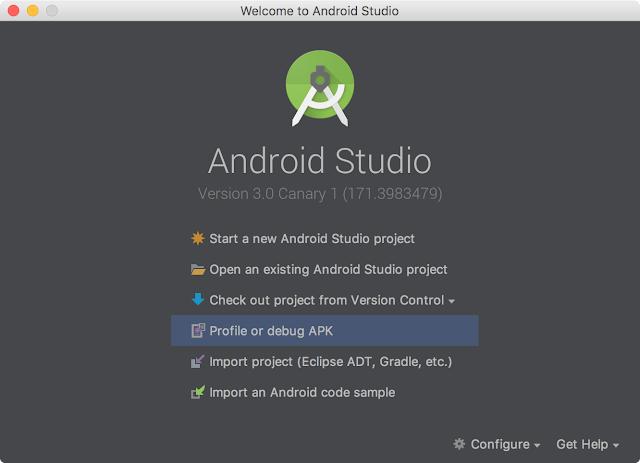Today is the beginning of KotlinConf. It's been almost 6 months since we announced Kotlin as a first-class language for Android at Google I/O. During this period, the number of apps on Google Play using Kotlin has more than doubled. More than 17% of the projects in Android Studio 3.0 are now using Kotlin. We are really excited about the strong momentum, and we are thrilled that Android developers all over the world are discovering the joy of Kotlin programming.
Kotlin for Android is production-ready. From startups to Fortune 500 companies, developers are already using Kotlin to build their apps. Developers from Pinterest, to Expedia, to Basecamp -- and many others -- are finding their use of Kotlin is increasing productivity and their overall developer happiness levels. Take a look at some of their experiences with Kotlin below.
With the recent release of Android Studio 3.0, there is now a stable version of our IDE that has Kotlin support built-in. With Support Library 27, we have started adding nullability annotations to make the APIs friendlier to use in Kotlin. We recently published the Android Kotlin Guides on GitHub to provide some guidance for Android Kotlin style and interop. We have also been porting some of our Android samples to Kotlin, and we are adding Kotlin to our official documentation.
Android Studio 3.0
Last week, we released Android Studio 3.0 on the stable channel. This is the first stable release of Android Studio that has Kotlin support built-in. Building on the strength of IntelliJ's Kotlin support, many critical IDE features like code completion and syntax highlighting work well for Kotlin. You can choose to convert Java code to Kotlin by using Code → Convert Java File to Kotlin File, or you can convert snippets of code just by pasting Java code into a Kotlin file.
Project and code templates have also been updated with Kotlin support. When you create a new project or add a new code file, you can choose Kotlin as one of the language options.
The tooling experience with Kotlin is by no means perfect yet. We are aware of several known issues, and we will continue to improve the IDE support for Kotlin in future releases.
Android Kotlin Guides
There are two separate Android Kotlin Guides:
- Style guide - details a set of rules and coding standards that Google recommends when writing Kotlin for Android. The guide addresses naming conventions, formatting, structure of the source contents, and much more.
- Interop guide - provides a set of rules for creating APIs in the Java and Kotlin programming languages, so that the consuming code in the other language will feel idiomatic.
We intend these guides to be living documents and will evolve them over time. They are hosted on GitHub and we welcome your contributions.
Nullability Annotations
Null-safety is an important feature of the Kotlin language. It helps developers avoid NullPointerExceptions and improves the quality of their apps. Null-safety is a bit more complicated when using Java code from Kotlin. Since any reference in Java may be null, Kotlin's requirement for strict null-safety becomes impractical for Java objects. Types declared in Java that do not contain nullability annotations are called platform types - this means the Kotlin compiler does not know whether it is nullable or not. When calling methods with variables of platform types, the Kotlin compiler relaxes null-safety checks. That means the overall null-safety of your app is weakened.
To let developers take more advantage of Kotlin's strict null-safety, we have started adding nullability annotations in Support Library 27. The Support Library contains a huge API surface area, and we will continue to expand the nullability annotation coverage in the next several releases. In addition, we will also be adding nullability annotations to other Android APIs over time.
While the Kotlin adoption growth is fantastic, our commitment to the Java and C++ programming languages remains unchanged. We've added Java 8 language features support in Android Studio 3.0, and we've added more Java 8 language APIs in Android Oreo. We are also continuing to improve our support for C++17 in the NDK. So even if you are not using Kotlin, your language support will continue to improve.
It's an exciting time to be an Android developer. If you haven't had a chance to try Kotlin, you can get started by learning the basic syntax and by playing with the excellent Kotlin Koans. When you are ready to use Kotlin in your Android app, you can jump to the Android Kotlin page for more resources. With Kotlin's Java interoperability and Android Studio's Java to Kotlin converter, it's easy to start using Kotlin in your project.
Happy Kotlin-ing!


























